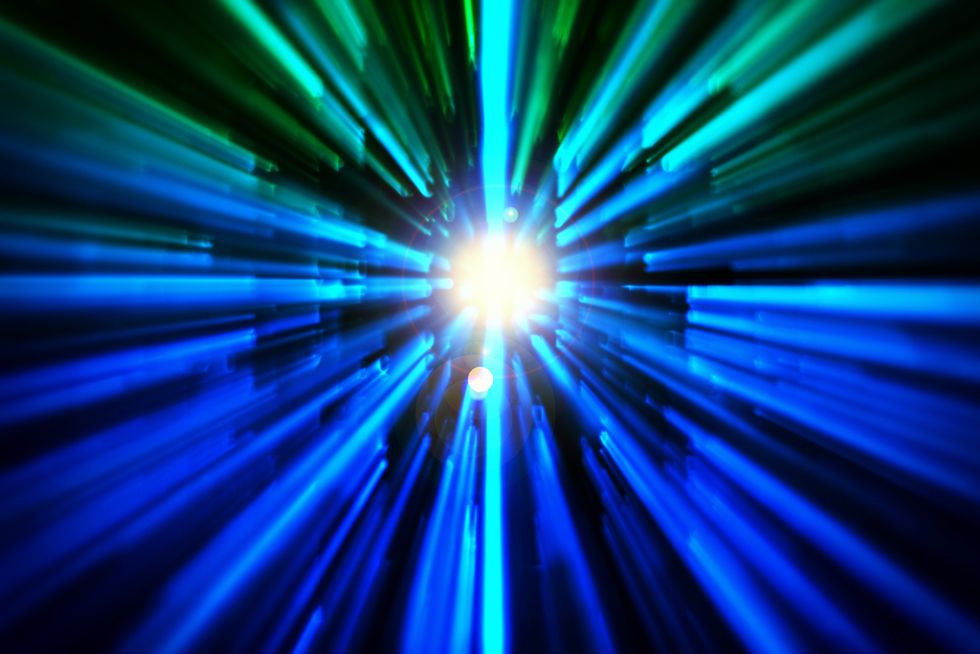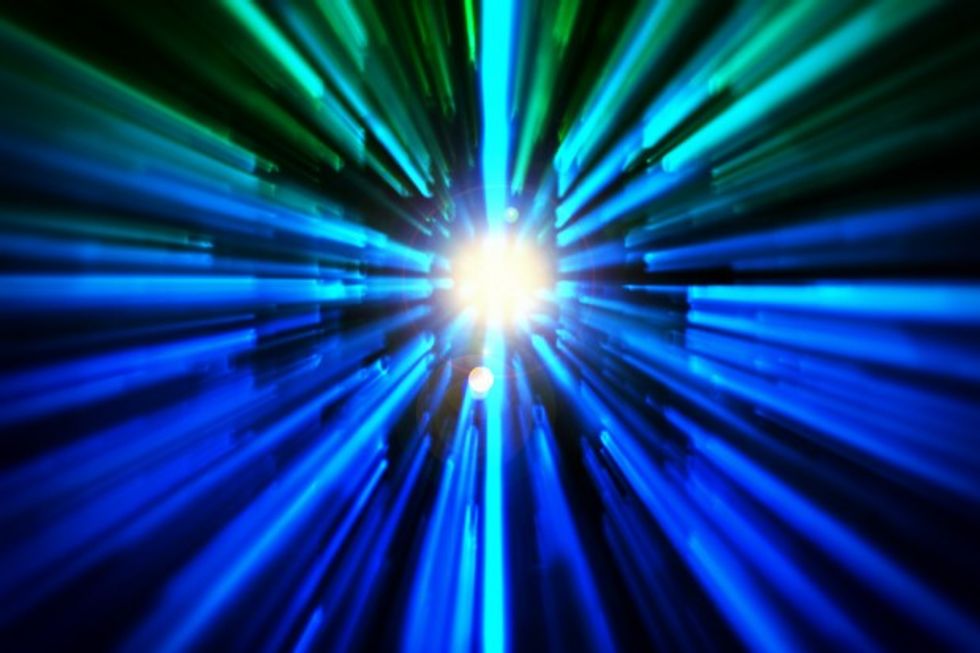
Photo credit: Shutterstock

In March, NASA said the concept of "warp drive" was "impossible," but news is swirling that it hasn't stopped engineers from conducting tests that could someday allow for faster-than-the-speed-of-light travel.

Scientists at NASA's Johnson Space Center tested an electromagnetic propulsion drive in a vacuum, according to NASASpaceFlight.com, an industry news website with a forum that it says is frequented by NASA and space industry professionals.
Nancy Smith Kilkenny with SGT Inc., an engineering firm with contracts for federal agencies, wrote on NASA's website in March though that "warp drive" is currently "at the level of speculation."
"The bulk of scientific knowledge concludes that it’s impossible, especially when considering Einstein’s Theory of Relativity," she said. "There are certainly some credible concepts in scientific literature, however it’s too soon to know if they are viable."
She said that NASA was working on ion propulsion for deep space missions, which she said was the "fastest and most efficient to date."
"There are many 'absurd' theories that have become reality over the years of scientific research. But for the near future, warp drive remains a dream," Kilkenny said.
But NASASpaceFlight.com noted that on its forum Paul March, a NASA engineer working in the Eagleworks Lab, wrote in February of this year that the lab was building upon a paper published last year that gave an overview of "the warp field interferometer test bed being implemented [at NASA's] Advanced Propulsion Physics Laboratory." At the time, Dr. Harold White wrote that the "tools necessary to detect a modest instance of the phenomenon are near at hand."
Watch White talk about interstellar travel last year:
In February, March wrote on the NASASpaceFlight.com forum that the Eagleworks lab was "working on the copper frustum thruster that was reported on last summer at the AIAA/JPC. We have now confirmed that there is a thrust signature in a hard vacuum (~5.0x10^-6 Torr) in both the forward direction, (approx. +50 micro-Newton (uN) with 50W at 1,937.115 MHz), and the reversed direction, (up to -16uN with a failing RF amp), when the thruster is rotated 180 degrees on the torque pendulum."
He went on to write that the research is going slowly because of a lack of monetary resources.
"We are still working on obtaining enough data though that will allow us to go to Glenn Research Center (GRC) for a replication effort in the next few months," March wrote. "However that will only happen if we can make the thrust signature large enough since the GRC thrust stand can only measure down to ~50uN, so we have to get the thrust signature up to at least 100uN before we can go to GRC."
March, speaking with CNET this week, said the research is "just a continuation of my work tackling the fundamental problem that has been hindering manned spaceflight from the termination of the Apollo moon program. That being the availability of a robust and cost-effective power and propulsion technology that can break us loose from the shackles of the rocket equation."
Check out NASASpaceFlight.com's full post for even more details on the current warp drive research.
—
Front page image via Shutterstock.